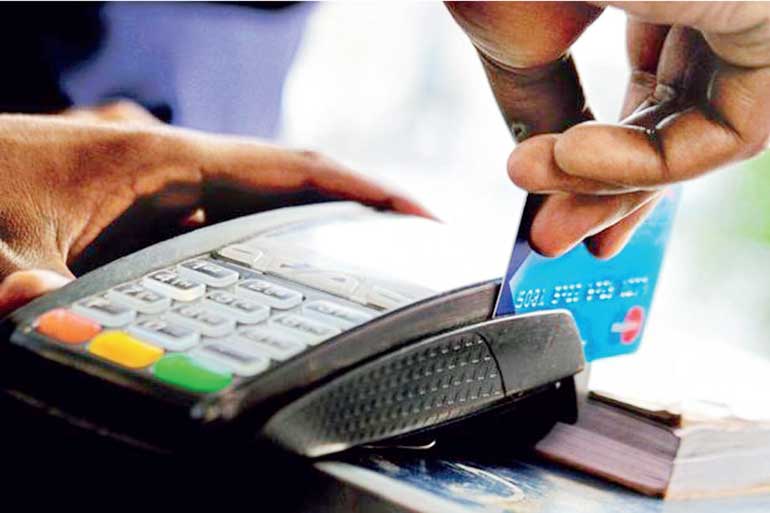Monday Jan 05, 2026
Monday Jan 05, 2026
Wednesday, 6 December 2017 00:10 - - {{hitsCtrl.values.hits}}
 The proposal in the 2018 Budget speech to raise Rs. 20 billion through a special ‘Debt Repayment Levy’ (DRL) at the rate of 20 cents per Rs. 1,000 on total transactions made through banks made me think about the incentives it would create.
The proposal in the 2018 Budget speech to raise Rs. 20 billion through a special ‘Debt Repayment Levy’ (DRL) at the rate of 20 cents per Rs. 1,000 on total transactions made through banks made me think about the incentives it would create.
Even if Rs. 0.20 per Rs. 1,000 (0.02%) is small, the existence of alternative transaction modes creates a disincentive to engage in the mode that is subject to the levy. Will this encourage moves toward electronically mediated transactions? What are the costs of implementing the DRL?
The technical notes to the Budget state that the DRL “will be introduced on cash transactions by financial institutions.” It is further stated that the levy “will be charged on total cash transactions and should be paid by the financial institutions”.
As someone not immersed in the technicalities of the financial sector, I tried to visualise “non-cash” transactions that would be exempt from the 0.02% levy. Cashless payments to merchants and receiving salaries electronically seemed what readers could relate to.
Point of Sale (POS) transactions are what many people have seen, if not directly engaged in. POS terminals that allow customers to make payments directly to merchants through credit, debit or stored-value cards have been in operation since 1994. A card is swiped; a signature or some other authorisation is given to debit the exact amount. In the cash mode, the customer stands before the merchant; hands over cash money; receives change in cash as applicable.
According to the Central Bank, 44,842 POS terminals were in operation in 2017 Q2. The value of POS transactions for the second quarter of 2017 amounted to Rs. 101.1 billion, an increase of 24.9% over the corresponding period in 2016. The number of transactions had increased by 22% to 20.7 million.
Salaries may be paid by cash or by cheque or be directly transferred electronically. Getting a pile of currency notes as salary should subject one to the 0.02% levy. It seems that electronic transfer from the employer to the employee should be exempt.
Such transfers take place over the Sri Lanka Interbank Payment (SLIP) system, which accounted for 12% of all non-cash retail transactions in the country, according to the Central Bank. For the second quarter of 2017, SLIP handled 7,584,500 transactions for a value of Rs. 415.6 million. This was an increase of 19.6% in value over the second quarter of 2016.
From the very language used by the Central Bank’s Payments Bulletin, payments made through SLIP should be exempt from the levy. On the face, the levy should provide incentives for organisations currently processing salaries in cash to immediately switch to SLIP. Do cheques qualify? Possibly.
But the whole point about money is that it circulates. The salary that a person received electronically does not stop there. It could be used to pay for groceries through a debit card at a POS terminal. Or it could be withdrawn from an ATM in the for m of cash and used to pay for groceries. In the former instance the levy should not have to be paid. But in the latter instance, the cash withdrawal would be subject to a deduction of 0.02%.
One withdraws Rs. 10,000 from an ATM, but receives only Rs. 9,998 technically. Of course, ATMs can’t handle such numbers so the Rs. 2 will have to be deducted from the account. The backends of 4,035 ATMs belonging to multiple banks will have to be reprogrammed.
One wonders whether the major software changes that will have to be implemented to collect the levy just for three years will be worth it.
The costs of working with cash are known to business people who use cash. They need to check for counterfeit notes, count accurately, and maintain safes for storage. They always run the risk of being robbed on premises or while transporting cash. But the benefits are also known by such people.
notes, count accurately, and maintain safes for storage. They always run the risk of being robbed on premises or while transporting cash. But the benefits are also known by such people.
We are by now familiar with claims about Sri Lanka’s declining tax yield relative to GDP and the measures the Government is taking to reverse the downward slide. A recent article in the Economist about Myanmar’s tax take, even lower than ours at 7.5% of GDP, is illuminating:
Inside a noodle house in central Yangon, business is buzzing. Customers huddle over tables, slurping down chicken soup or gobbling dumplings. Everyone pays in cash. Few customers ask for receipts. When your correspondent does so, one is handed over, complete with government-issued stickers. But the cost of the meal goes up. On the vast majority of the restaurant’s sales, it seems, no one is paying any tax.
Now imagine a world where incentives have been created for customers and merchants to switch to POS transactions. The audit of such systems is easier than sending decoys. More transactions will be recorded; more will fall within the tax net. Is this what the Government is trying to do?
The changes in systems needed to implement the special DRL are onerous. The definitions are unclear. Lots of hard work by lawyers and IT specialists will be needed to implement the changes. If that is the case, one wonders why the Finance Minister says it should be levied only for three years. A temporary levy should be one that can be implemented at low cost. This does not meet that criterion.
Hopefully, they will come up with a simpler way to raise money in the course of the debate. Or quietly bury the proposal as was the custom with the past two budgets.
But the good thing is that the proposal makes us think about the pros and cons of electronic money. We have been making solid but gradual progress in shifting from old-fashioned cash to newer and more efficient modes of payment. Perhaps this is the time we can take some considered decisions on how to speed up the transition and include more small businesses and small payments in the new world of electronic payments. But that nudge need not be a costly three-year special levy.